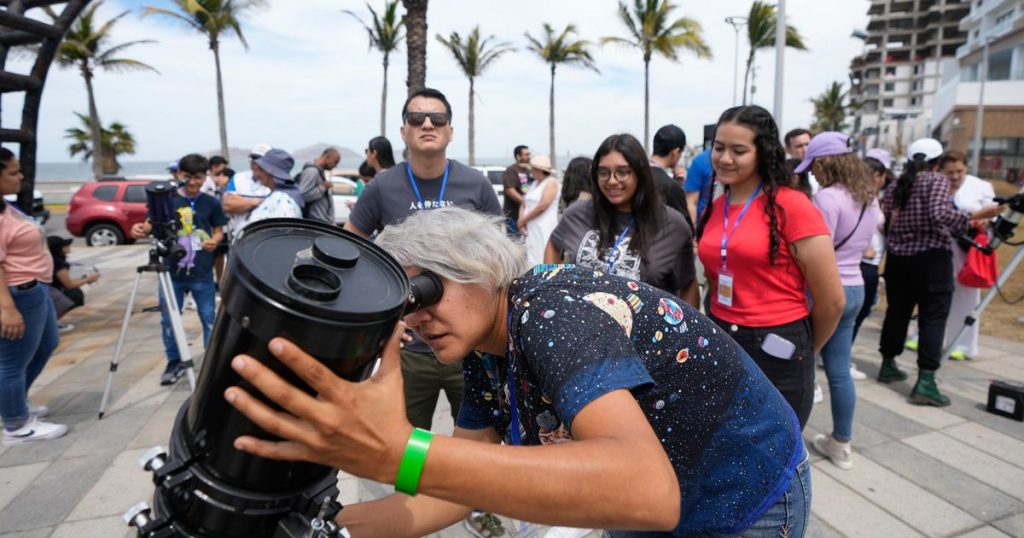Millions of spectators across North America eagerly anticipated Monday’s total solar eclipse, despite uncertain forecasted cloud cover. The eclipse was set to be the biggest in North America’s history, with the path stretching from Mexico to Canada and promising over four minutes of midday darkness in Texas and other prime locations. Almost everyone in North America would experience at least a partial eclipse, weather permitting. The unpredictability of the weather added to the excitement, with people coming together to share the experience.
For the full eclipse on Monday, the moon was predicted to completely block the sun, resulting in a twilight period where only the sun’s outer atmosphere, or corona, would be visible. This would lead to a temporary darkness, enough for birds and other animals to become silent, and for planets, stars, and possibly even a comet to be visible. The eclipse would last up to 4 minutes and 28 seconds, longer than the previous U.S. coast-to-coast eclipse seven years ago due to the moon’s proximity to Earth. It would be another 21 years before the U.S. would witness another total solar eclipse of this scale.
The eclipse’s path would span more than 4,000 miles across the continent, taking just 1 hour and 40 minutes to do so. Eye protection, such as eclipse glasses and filters, was necessary to safely view the sun during the eclipse, except when it was completely hidden from sight. The path of totality was approximately 115 miles wide and included major cities like Dallas, Indianapolis, Cleveland, Buffalo, New York, and Montreal. An estimated 44 million people lived within the path, with millions more within a 200-mile radius, leading to sold-out hotels, flights, and congested roads.
Experts from NASA and universities were stationed along the route to conduct research, launch rockets, release weather balloons, and conduct experiments. The International Space Station’s astronauts were also poised to observe the eclipse from their vantage point in space. The eclipse was a highly anticipated event, drawing in amateur astronomers, scientists, and curious individuals, all coming together to witness this rare and spectacular phenomenon. The Associated Press Health and Science Department is supported by the Howard Hughes Medical Institute’s Science and Educational Media Group, with the AP being responsible for all content.


